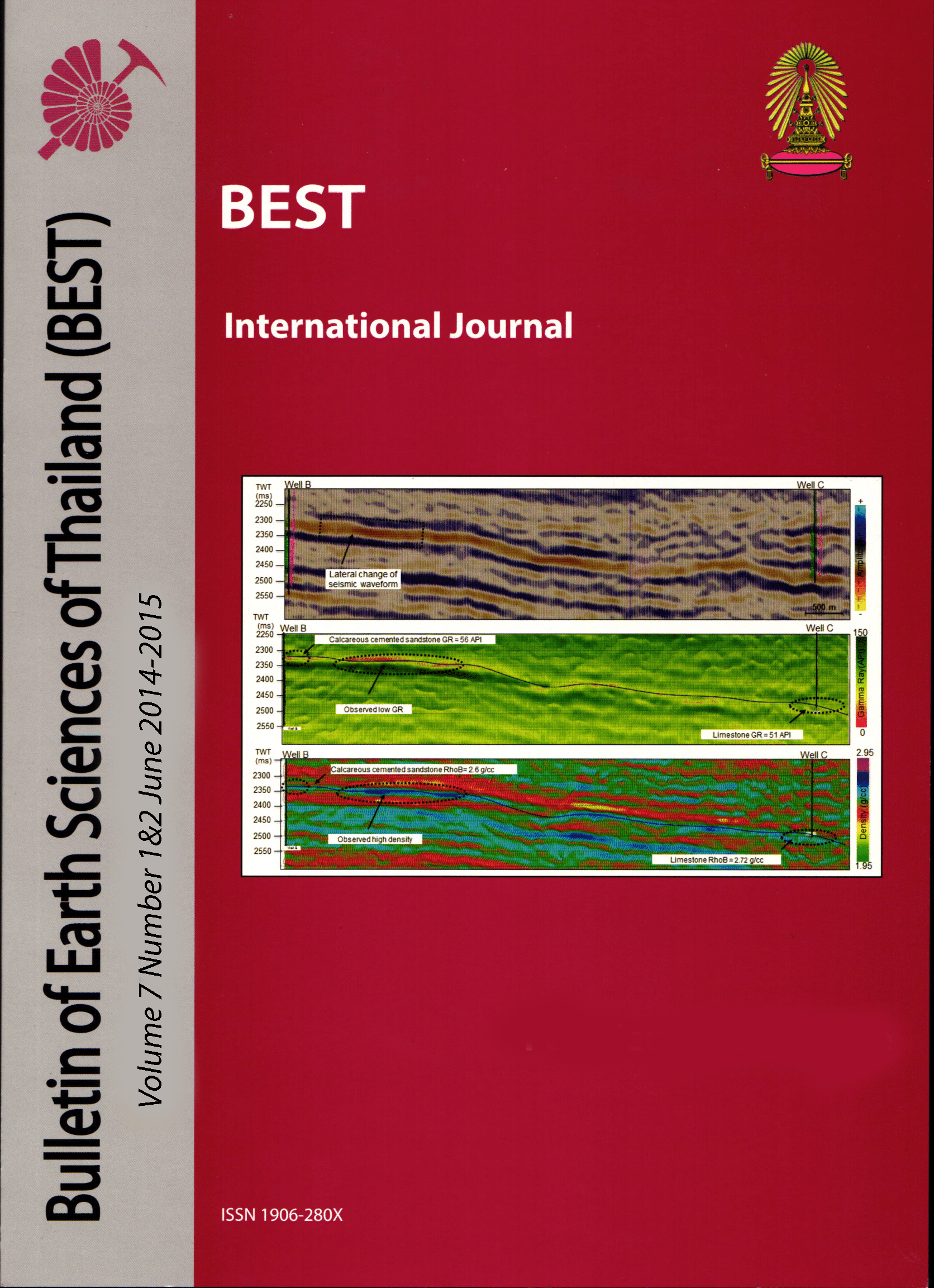Reservoir Characterization of Pagasa and Lower Matinloc Formations by Using AVO and Multi-Attribute Analysis, Southwest Palawan Basin, Philippines
Main Article Content
Abstract
Several distinct high amplitude anomalies occur in both the Lower Matinloc Formation and Pagasa Formation equivalent in the Southwest Palawan Basin, Philippines. The main objective of this study is to conduct a thorough investigation on the nature, occurrence, extent and reservoir potential of these high amplitude anomalies. This study explores the possibility that either these high amplitudes are associated with reservoir sands. On a regional scale, the cross plot analysis for all the wells revealed that no generalized P-Impedance and Gamma Ray (GR) relationship could be established for the whole area. However, P-Impedance can be an effective lithology indicator when the cross plot analysis is applied in small intervals and over small regions. Similarly, density was able to discriminate sands from shales in the Lower Matinloc Formation (Upper Miocene Section). But it is not a good lithology discriminator for other formations. Due to great variations of rock physics parameters, it is required to establish local relationship before computing multi-attributes or applying inversion techniques. Fluid replacement modeling and AVO analysis indicate that water wet and gas saturated sands have same AVO response. The sands can be classified as Type 2 and Type -4, per Young et. al., (2003) AVO response classification. Multi-attribute analysis and GR prediction showed that the high amplitude anomalies are associated with shale to shaley sands. The bright amplitudes in the area correspond to shales. Therefore, these bright amplitudes are not associated with reservoir or fluids.
Article Details

This work is licensed under a Creative Commons Attribution-NonCommercial-NoDerivatives 4.0 International License.
Copyright © 2008 Department of Geology, Faculty of Science, Chulalongkorn University. Parts of an article can be photocopied or reproduced without prior written permission from the author(s), but due acknowledgments should be stated or cited accordingly.
References
Acosta, J. G., 2011, Analysis of seismic facies, lithology and reservoir potential of the early to middle Miocene Pagasa formation in the southwest Palawan basin, Philippines: A research Report submitted as partial fulfillment for the Degree of Master of Science in Petroleum Geoscience at Chulalongkorn University, Thailand.
Ahmad, M. N. and Rowell, P., 2013, Mapping of fluvial sand system using rock physics analysis and simultaneous inversion for density: case study from the Gulf of Thailand.: First Break, v. 31, p.49 to 54.
BED, B. o. E. D., 1986, Basins of Sulu Sea, Palawan and Mindoro: Sedimentary Basins of the Philippines Their Geology and Hydrocarbon Potential, Manila: Philippine Department of Energy (DOE) Data Center., v. IV, p.p.63-111.
Bon, J., 2002, Pagasa Formation Sequence Stratigraphy: P.T. Robertson Utama Indonesia, prepared for Shell Philippines Exploration B.V, v. 1.
Castagna, J., Swan, H., Foster, D. and Peddy, C., , 1998, Framework for AVO gradient and intercept interpretation: Geophysics, v. 63, p. 948-956.
McGregor, A., 2007, A Brief review of AVO anomaly classification Geohorizons, p. 34-37.
Rauch-Davies, P. C. H. V. a. M., 2006, AVO attribute analysis and seismic reservoir characterization: First Break, v. 24.
Russell, B., 2002, An AVO Primer: Search and Discovery Article no. 40051.
Swan, J. P. C. a. H. W., 1997, Principles of AVO Cross-plotting: The Leading Edge, v 16 (4), 337-344.
Young, R. A. LoPicollo., Robert D., 2004, Conforming and non - conforming sands-An organizing framework for seismic rock properties.: Gulf Coast Association of Geological Societies Transactions, v. 4, p. 767-773.


